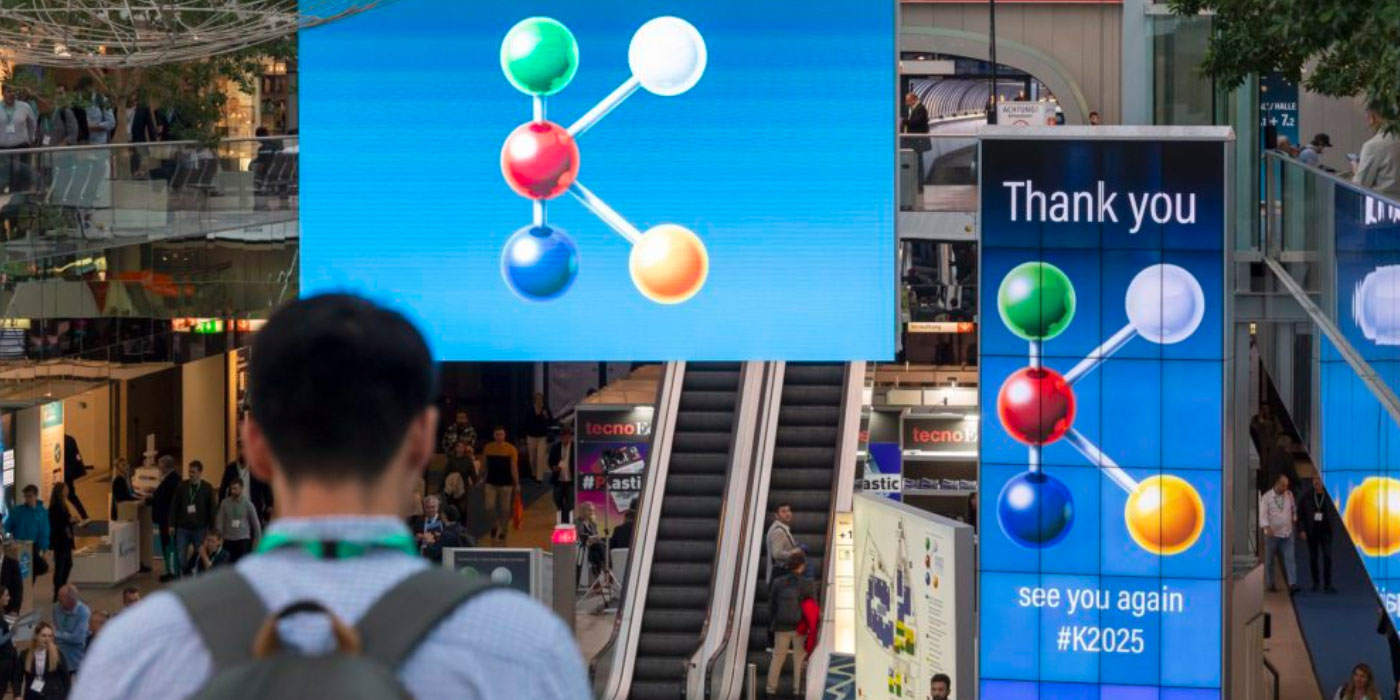Eddy Hilbrink of AFP worked with Peter Cloeren to commercialize nanolayer stretch film in Europe. In the background is Cloeren’s 33-layer NanoLayer Feedblock.
Don’t expect Eddy Hilbrink to develop new technology just for technology’s sake. But new technology that offers a solution to a real-world problem? That’s his sweet spot. It’s what drove him to raise the bar in engineering nanolayer stretch film that has set new global standards in performance and quality—standards that some suggest have put North American processors in catch-up mode.
Hilbrink heads up strategic R&D projects for Apeldoorn Flexible Packaging B.V. (AFP), a Dutch producer of a wide range of blown and cast film for packaging. While the company has been producing stretch film since 1982, in early 2000 AFP took a look at its product line with fresh eyes, recalls Frank van den Berg, AFP’s managing director. “We saw products that were sold by the pound. We saw a market in which it was difficult to discriminate one company’s film product from the next,” Hilbrink told Plastics Technology in an exclusive interview at NPE2015. “We saw a business that was unresponsive to customers. I thought to myself, ‘Let’s do something different.’”
Hilbrink gained further insight during a tour of a beverage facility for which AFP had been supplying stretch film for a non-beverage application. “I saw a pallet of bottles that had been returned (to the beverage maker),” he recalls. “The bottles were damaged because the pallet tipped over in-transit. I asked, ‘Why did this happen?’ I was told, ‘Every summer we have this problem.’ So I went back to our lab and did some investigating. We did a simulation at 45 C (113 F) on a typical beverage pallet of 2200 lb. We realized that at that load, if the pallet moves in any way, it elongates, and that leads to failure. We determined that if AFP could engineer a film with high holding forces, we could solve the problem.”
Hilbrink then started looking at nanolayer films and at the myriad of patents that shroud this technology. In 2007, he met Peter Cloeren, president of Cloeren Incorporated, Orange, Tex. (cloeren.com), a global leader in feedblock and die design and widely regarded as a thought leader in stretch film. In addition to supplying equipment for stretch film, Peter Cloeren himself broke new ground as a stretch-film processor when he launched Chaparral Films in 1994 and installed two of what were then considered state-of-the-art five-layer lines. (Cloeren sold Chaparral to ITW in 1996.) “I’m a chemical engineer,” Hilbrink notes. “Peter’s a mechanical engineer. It was a good dynamic.”
A year later, AFP invested more than $3 million to convert an existing three-layer line to produce 27-layer nano-stretch film using Cloeren’s NanoLayer Feedblock and 3800 Epoch III die with automatic gauge control. In January 2009, the first product (called Katan-Ex) from this line was shipped, and the result was a dramatic drop in product returns due to faulty film—“by a factor of 20,” Hilbrink says. The film won a DuPont Packaging Award in 2011.
Hilbrink adds, “Every customer AFP has secured since 2009, we have maintained.” At some point this year, AFP will have converted all its stretch-film capacity to nanolayer, firmly establishing it as a world leader in the field. At press time, in fact, AFP was converting an 8-up line to nano. The last line to be switched will have 55 layers.
In AFP’s film structure, 22 of the 27 layers are nano in a “2 x 11” structure, allowing more expensive, higher-performance sub-skin layers to sandwich a thicker core. For beverage applications, film is produced at 23 microns. Not surprisingly, Hilbrink keeps the particulars of the formulation and layer configuration to himself.
In the U.S., meantime, five-layer stretch film is still considered state of the art. Some of this is due to patent squabbles. Part can be explained by the fact that in the U.S., stretch film is still sold through distributors, an arrangement that separates the processor from the end user and makes the film producer less aware of when problems arise.
In the future, Hilbrink would not rule out AFP supplying the U.S. market, in which 0.5% of retail sales is lost to damage.
Source: https://www.ptonline.com/articles/news-highlights-from-npe2015




